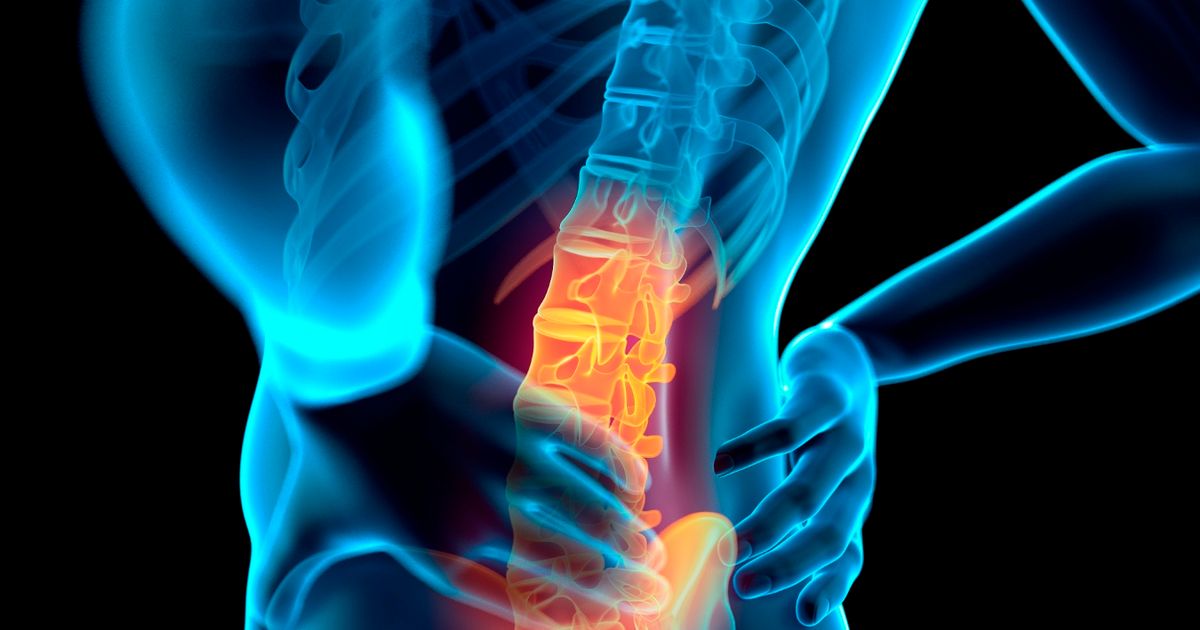The Top Warning Signs And Symptoms of Cervical Cancer
This year alone, an estimated 12,820 American women will be diagnosed with cervical cancer, and approximately 4,210 of those women will die from this disease. Although any cancer diagnosis, including one for cervical cancer, can be life-changing, there are ways to prevent this form of cancer, and one of the simplest ways is to get an annual pap smear, as early detection can dramatically increase a woman's chances of receiving effective treatment. Learn more now about the common warning signs and symptoms of cervical cancer, as well as what causes it, now.
Loss Of Appetite And Weight Loss

Loss of appetite and weight loss can be indicative of cervical cancer when it accompanies other gynecological symptoms. All cancers cause affected individuals to experience an unusual and prolonged lack of appetite. This malfunction occurs due to a combination of many factors including depression, lack of physical activity, too little energy to eat, feeling full quickly, dehydration, and an altered sense of smell and or taste. This appetite loss causes the patient to have a negative energy balance. When an individual is eating fewer calories than their body is burning off, it is called a negative energy balance. Because the body does not get enough nutrients from the food consumed, it depletes its stored nutrients so the cells can produce the energy they need. This process causes any fat cells to be used up for the production of cellular energy, resulting in weight loss. Even though cancer cells are harmful and serve no positive functional purpose to the human body, they are still cells that use up nutrients that should be allocated to other healthy cells. The combination of poor appetite and depletion of nutrients by cancer cells causes affected individuals to lose weight.
Keep reading to discover more symptoms of cervical cancer now.
Unexplained Changes In The Body

Although early stages of cervical cancer may not produce any symptoms at all, it is essential for women to pay attention to their general health and well-being. If a patient begins to feel nauseous or overly fatigued, it could be an indication cervical cancer is forming. This type of cancer, as mentioned, can also cause unexplained weight loss for some individuals. In addition to seeing a doctor every year for wellness and physical exams, it is recommended for patients to document their unexplained symptoms in a diary if they feel their symptoms have persisted for more than two weeks.
Continue reading to learn about another common sign that some women might experience.
Abnormal Menstrual Cycles

Often an embarrassing subject, women are encouraged to see their doctor if they experience an abnormally long menstrual cycle. A menstrual cycle that lasts days beyond a woman's normal timeline is cause for concern and could indicate damage to the cervix. While menstrual cycles vary from woman to woman and can be influenced by a myriad of variables ranging from birth control to stress, any prolonged menstruation outside of a woman's normal range should be raised with a medical professional. Likewise, unexpected periods can also indicate health problems. If a woman experiences periods too soon after her previous cycle, it can indicate irritation of the cervix, as would be expected with cervical tumors. If a woman's cycles remain abnormal or differ from her regular cycle for more than three months, consulting a doctor is strongly recommended. Even if it is not cancer, these changes can indicate other infections as well.
Learn more about the signs of cervical cancer now.
Abnormal Vaginal Discharge

Some vaginal discharge is normal for women during ovulation, as well as small amounts of vaginal discharge to occur two weeks before an expected period. However, patients are advised to visit their doctor if they experience a larger than average amount of discharge at any point before or after their cycles. Abnormal discharge can appear white, clear, or have a brown tint with hints of blood in it, and it may appear watery or have a foul smell. The patient's doctor will likely want to perform a vaginal exam to rule out any signs of abnormal cell growth, which is a cause of cervical cancer if the woman is experiencing an abnormal amount of discharge.
Keep reading to reveal another common, but sensitive symptom a female may experience if she has cervical cancer.
Vaginal Bleeding Or Spotting

Invasive cervical cancer usually causes irregular bleeding after sex, in between periods, or after menopause. The bleeding or discharge women can experience often is dismissed as spotting, which is a common occurrence for some women in between menstrual cycles. Postmenopausal women who no longer have periods may also experience irregular vaginal bleeding, which can be concerning. If a woman notices any irregular or abnormal bleeding of any kind, she should immediately contact her doctor as this may be a sign of cervical cancer, especially if she no longer has regular menstrual cycles.
Next, find out what common symptom can indicate cervical cancer, but can also be a sign of other conditions.
Painful Urination

Often mistaken for a common urinary tract infection, pain or a burning sensation during urination can indicate cervical cancer. There are several ailments that can present through pain while peeing, and nearly all of them should be treated by a medical professional. One of the most common is a yeast infection, and while some women can manage them on their own once they've had one, a diagnosis is still necessary and women experiencing a yeast infection for the first time should consult a doctor for treatment and guidance. Like any form of cancer, early detection and treatment of cervical cancer is key to a successful course of treatment.
Coming up, learn about another painful sign women should watch for.
Intense Pain Or Cramping

If a female experiences pain in the pelvic area or pain while having intercourse, it could be a sign of cervical cancer. In some cases, the pain can be accompanied by spotted bleeding. Advanced symptoms of cervical cancer include lower back pain, as well as inflammation or swelling of one or both legs. If a patient experiences any of these forms of pain or difficulty urinating, they should seek medical attention immediately as these are common symptoms of cervical cancer.
Read more about the significant warning signs of cervical cancer in women now.
Back Pain

Individuals who have cervical cancer may experience severe back pain as a symptom of their disease. This type of pain occurs when the lymph nodes in the pelvis or cervical cancer tumor encroach on the renal collecting system. The lymph nodes in the pelvic area usually become enlarged when cervical cancer spreads into them. The tumor or lymph nodes press on surrounding pelvic structures, causing an obstruction of urine. This obstruction enlarges the chambers within the kidney urine passes through after its components have been filtered out of the blood. This enlargement of the chambers causes urine to be unable to drain from the kidney resulting in a condition referred to as hydronephrosis or an accumulation of urine in the kidney. This mechanism causes the kidney to swell and experience inflammation. A swollen kidney can press on the individual's surrounding structures, muscles, and nerves, resulting in severe pain in the middle of the back. Pain in the back is a symptom more characteristic of cervical cancer that has advanced to late stages or metastasized to the lymph nodes.
Discover additional cervical cancer warning signs now.
Bleeding Following A Pelvic Exam

Individuals affected by cervical cancer commonly experience vaginal bleeding following a pelvic exam and other activities. The cervix is a neck of tissue similar in shape to a cylinder that attaches the uterus to the vagina. The cervix is mostly made up of fibromuscular tissue. Cervical cancer is any cancer that develops in or on the cervix itself. Cancer can grow around the cervix perimeter, part of which is located inside of the vagina. This cancer often ulcerates, causing the cervix edges in the canal to become chapped or cracked, dry, and irritated. Just like any other ulcerated part of an individual's mucous membranes, any disruption to the ulcerated area can rip open the dried cracks and result in bleeding. This issue means anything inserted into the vagina that touches the cervix can make it bleed easily. Bleeding may occur following the insertion of tampon, sexual intercourse, a pelvic exam, or a pelvic ultrasound. Even vigorous physical activity or exercise can cause a disturbance to the ulcerated surface of the cervix inside of the vagina and result in bleeding.
Learn more about the major symptoms of cervical cancer now.
Swollen Legs And Leg Pain

Swollen legs and leg pain may be a symptom that occurs in individuals affected by cervical cancer. This symptom occurs when the cervical tumor grows large enough or metastasizes into the nearby tissues or lymph nodes. Because cancer by definition is an uncontrollable mass of replicating non-functional cells, it only becomes larger when it is left untreated. The tumor and lymph nodes can compress nearby tissues that may squeeze several nearby veins and arteries. The femoral artery is the main artery that delivers oxygenated blood to the legs and feet. If this artery becomes pinched or compressed due to encroaching cervical cancer, the tissues in the leg will not receive adequate amounts of oxygen. When the oxygen supply is cut off from the cells, the individual will feel the pain that is associated with dying tissues from oxygen deprivation. Cervical cancer can also cause the compression or squeezing of the iliac vein or main vein that returns oxygen-poor blood to the heart from the legs and feet. When this vein becomes compressed, the blood is unable to be pushed back up to the heart by the valves inside of the veins. The pool can pool up in the ankles and legs, causing them to swell.
Continue reading to discover not only a common symptom of cervical cancer but also a leading cause of it.
High-Risk HPV Or Genital Warts

If a woman has been diagnosed with high-risk human papillomavirus (HPV), she has a significantly higher risk of developing cervical cancer compared to healthy individuals who do not have HPV. This virus can cause genital warts or unexplained rashes near the groin, and once this virus is detected, it can lay dormant in the body with no symptoms at all for an extended period. It is important for a woman to visit her doctor regularly for pap smears to monitor the virus and ensure it does not develop into cancer. If any abnormal cells are detected, her doctor may need to perform a biopsy for an accurate diagnosis or to rule out cancer altogether.
Continue reading to find out what causes cervical cancer in women and how it is detected.
What Causes Cervical Cancer?

Cervical cancer is caused by severe abnormal changes in the cells lining the cervix or the lower part of a woman's uterus. In most cases, precancerous or cancerous cell changes occur in the cervix at the transformation zone, as these cells are constantly changing. During this process, some cervical cells can become abnormal if a woman is infected with high-risk types of HPV. Regular pap smears performed by a physician is the easiest and best way to detect if any abnormal cells are present in the cervix and if these cells are cancerous.
Those at risk of developing cervical cancer include a female who engages in high-risk sexual behaviors, having an impaired immune system, and some autoimmune diseases such as HIV, as well as smoking cigarettes or breathing in secondhand smoke. As previously mentioned, a woman with a high-risk type of HPV can also be at risk, as HPV is a sexually transmitted infection (STI) and is the most common cause of cervical cancer.
Next, learn how women, regardless if they are at risk or not, can prevent cervical cancer from developing.
Ways To Prevent Cervical Cancer

There are a few simple things many women can do to reduce their risk of developing cervical cancer, especially if they are prone to it. One of the greatest ways to prevent this dreadful disease is to have a regular pap smear done by a physician, as it is one of the primary ways healthcare professionals can detect this form of cancer, along with other conditions. A doctor will suggest a woman have regular pap smears performed based on her age and if she is at risk due to her lifestyle choices, medical history, and environmental factors.
A typical lifestyle choice that can prevent cervical cancer from developing is for a female to quit smoking, to always wear condoms when engaging in intercourse to reduce the risk of sexually transmitted infections and to try and limit the number of partners they have. Another, somewhat controversial, preventative option is for women under twenty-six years old to get the HPV vaccine, which protects the reproductive organs from developing cervical cancer. One of the best ways to prevent HPV or any other sexually related condition is to always practice safe sex, communicate openly with one's partner, and to always use condoms, which can greatly lower the risk of a woman being diagnosed with cervical cancer.
